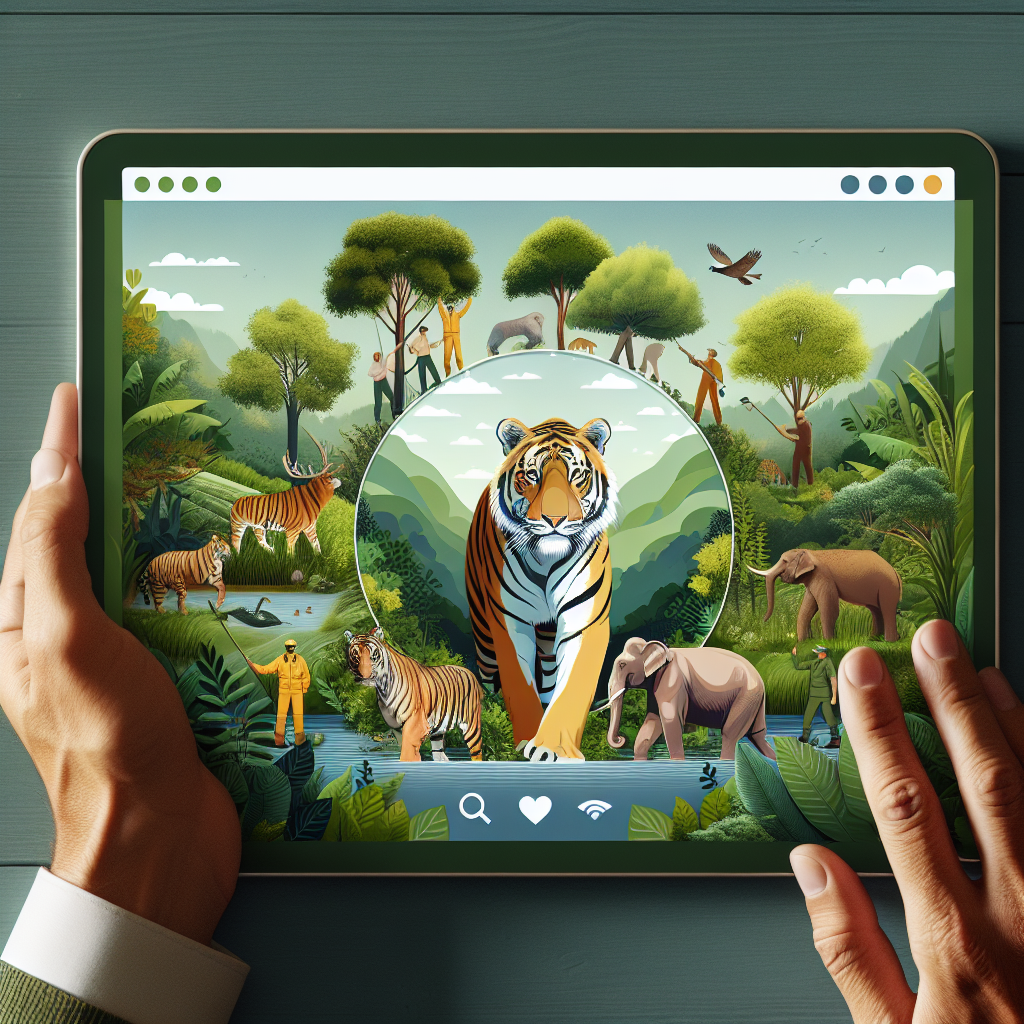Conservation & Wildlife:

Conservation and Wildlife: A Vital Balance for the Future
In recent years, the intricate relationship between conservation and wildlife has become a growing focus for ecologists, governments, and concerned citizens alike. As human development continues to encroach upon natural habitats, the urgent need to protect our planet’s biodiversity has never been more critical. Understanding the significance of conservation efforts in maintaining healthy ecosystems is paramount for safeguarding the future of both wildlife and humanity.
The Importance of Biodiversity
Biodiversity, the variety of life on Earth, is fundamental to the functioning of ecosystems. It provides resilience against environmental changes and stresses, supports a vast array of ecosystem services, and contributes to human well-being. From pollination of crops and natural pest control to climate regulation and cultural enrichment, the diversity of species plays a critical role in nurturing the planet. The loss of biodiversity can disrupt these services, leading to ecological instability and decreased quality of life.
Threats to Wildlife
Wildlife faces numerous threats, most of which are the result of human activities. Habitat destruction, driven by urban expansion, agriculture, and logging, is the leading cause of biodiversity loss. Pollution, climate change, overexploitation of resources, and the introduction of invasive species further exacerbate the pressures on wildlife populations. As habitats are fragmented and altered, species find it increasingly difficult to survive, leading to alarming rates of extinction.
Conservation Strategies
Addressing the threats to wildlife requires comprehensive and strategic conservation methods. Protected areas, such as national parks and wildlife reserves, form the cornerstone of global conservation efforts. These areas provide critical refuges for endangered species and help preserve vital ecosystems. However, to be effective, they must be adequately funded and managed.
Additionally, conservationists are employing more integrated approaches that consider the needs of local communities. Community-based conservation initiatives, which involve local populations in the planning and management of natural resources, have gained traction as a sustainable model. These initiatives not only preserve biodiversity but also enhance the livelihoods of those who depend on these resources.
Restoration ecology, the practice of restoring degraded ecosystems, is another vital strategy in conservation efforts. By rehabilitating ecosystems, we can increase habitat availability and connectivity, allowing wildlife populations to recover and thrive. Moreover, restoring natural processes, such as water flow and fire regimes, helps maintain ecological integrity and resilience.
The Role of Technology and Innovation
In recent years, technology has become an invaluable tool in conservation. Satellite imaging and drone technology allow scientists to monitor land-use changes, track animal movements, and detect illegal activities such as poaching in real-time. Genetic techniques, including DNA barcoding and genomic analysis, enable the tracking of genetic diversity and the identification of new species.
Innovations in renewable energy and sustainable practices are also crucial for reducing the human footprint on the environment. By cutting down on pollution and mitigating climate change, these advancements contribute indirectly to wildlife conservation.
The Path Forward
The challenge of conservation in the 21st century is formidable, but not insurmountable. Global cooperation, robust policy frameworks, and widespread public awareness are essential components of a successful conservation strategy. Governments must prioritize environmental policies and enforce regulations that protect wildlife and natural habitats. International agreements, such as the Convention on Biological Diversity, provide a platform for collaborative action, setting out targets and strategies to address global conservation challenges.
Education and advocacy are equally crucial to cultivate a culture of conservation. By raising awareness and encouraging sustainable practices, individuals can play a significant role in promoting wildlife conservation. Simple actions, such as reducing waste, supporting ethical products, and participating in citizen science initiatives, can contribute to worldwide conservation efforts.
In conclusion, the conservation of wildlife is not merely an environmental concern; it is a necessity for the survival and prosperity of all life on Earth. By fostering a symbiotic relationship between humans and nature, we can ensure that future generations inherit a thriving and diverse world. The time to act is now, for the preservation of wildlife is the preservation of our collective future.